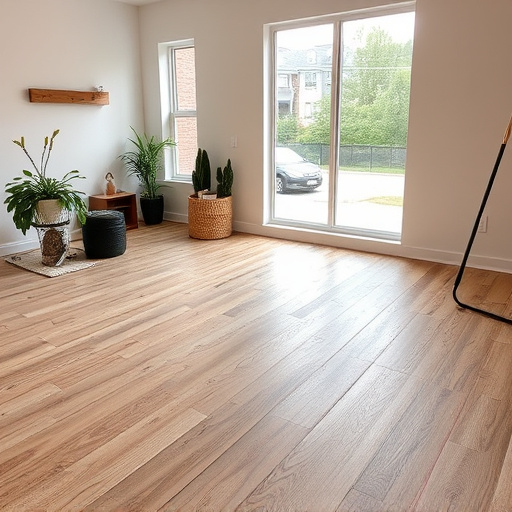Before starting any flooring install, carefully assess your space, consider traffic patterns, lighting, and existing infrastructure, then choose the best flooring type and style for your needs and budget. Measure rooms accurately, clear obstacles, protect adjacent walls and fixtures, and understand your specific requirements (e.g., tool selection, installation techniques) based on flooring options like hardwood, laminate, vinyl, or carpet to ensure a smooth project flow aligned with your vision.
Looking to revamp your space with new flooring but don’t know where to start? This comprehensive guide answers the top FAQs about the flooring install process, empowering you with the knowledge needed for a successful transformation. From preparation and planning to the step-by-step installation and post-care, we break down everything. Discover expert tips on choosing the right flooring type, setting a budget, removing old floors, and maintaining your new investment. Elevate your home with confidence – start your flooring journey today!
- Preparation and Planning for Flooring Installation
- – Understanding your space: Measuring rooms, considering traffic patterns, and identifying unique floor requirements.
- – Choosing the right flooring type: Hardwood, laminate, vinyl, carpet – each has its pros and cons, impacting installation steps.
Preparation and Planning for Flooring Installation

Before starting the flooring install process, thorough preparation and planning are essential. Begin by assessing the area to be renovated—whether it’s a living room, bedroom, or even a bathroom renovation—and determining the type and style of flooring that best suit your needs and budget. This involves considering factors like traffic patterns, lighting, and existing infrastructure, such as underfloor heating or cooling systems.
Once you’ve made these determinations, create a detailed plan. Measure the space accurately to ensure you purchase the right amount of flooring material. Clear the area of any furniture, fixtures, or decorations that might interfere with installation. If applicable, plan for exterior painting or other related renovations that could impact the overall project timeline and budget. Prepare your functional spaces by protecting adjacent walls, floors, and fixtures from debris and damage during the flooring install process.
– Understanding your space: Measuring rooms, considering traffic patterns, and identifying unique floor requirements.

Before starting a flooring install process, understanding your space is paramount. It begins with meticulous room measurements to ensure the right amount of material is procured. This step is crucial for any project, whether it’s a kitchen remodel, home additions, or bathroom remodel, as it dictates the type and quantity of flooring needed. For instance, high-traffic areas require more durable flooring solutions than quiet bedrooms.
Traffic patterns play a significant role in dictating where heavy furniture will be placed, how much foot traffic an area gets, and even seasonal changes. Identifying these unique floor requirements is key to choosing suitable materials that align with your lifestyle and the room’s purpose. Proper planning in these areas ensures not just aesthetics but also longevity of the flooring install.
– Choosing the right flooring type: Hardwood, laminate, vinyl, carpet – each has its pros and cons, impacting installation steps.

When embarking on a flooring install project, selecting the appropriate flooring type is a significant initial step. Each option—be it hardwood, laminate, vinyl, or carpet—carries unique advantages and considerations that will shape the installation process. For instance, hardwood floors offer natural elegance but require careful measurement and precise cutting to fit seamlessly around fixtures. Laminate provides a cost-effective alternative with various design options, yet its click-lock system demands specific alignment for a secure fit. Vinyl flooring is known for its durability and water resistance, often requiring less preparation than other types. Meanwhile, carpeting adds comfort and warmth but necessitates thorough cleaning to remove dust during installation.
Understanding these nuances ensures that the residential renovations or kitchen remodel process proceeds smoothly. The chosen flooring will dictate tools, techniques, and even the sequence of steps in the interior painting and flooring install journey, making it crucial to select a type that aligns with your project’s needs and vision.
When preparing for a successful flooring install, meticulous planning is key. Understanding your space’s unique needs, from traffic patterns to room measurements, ensures the ideal flooring type—be it hardwood, laminate, vinyl, or carpet—is chosen to enhance its aesthetics and durability. By considering these factors, you lay the groundwork for a smooth installation process that transforms your living spaces into vibrant, functional areas that stand the test of time.














